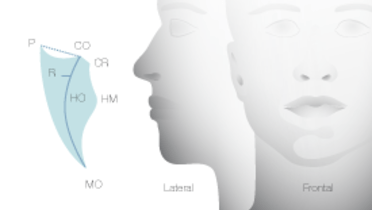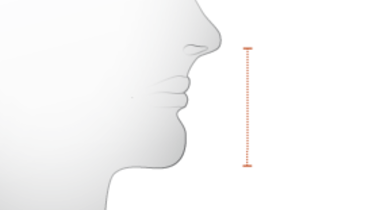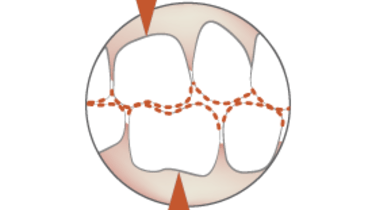-
0
Patient Assessment
- 0.1 Patient demand
- 0.2 Overarching considerations
- 0.3 Local history
- 0.4 Anatomical location
- 0.5 General patient history
-
0.6
Risk assessment & special high risk categories
- 5.1 Risk assessment & special high risk categories
- 5.2 age
- 5.3 Compliance
- 5.4 Smoking
- 5.5 Drug abuse
- 5.6 Recreational drugs and alcohol abuse
- 5.7 Parafunctions
- 5.8 Diabetes
- 5.9 Osteoporosis
- 5.10 Coagulation disorders and anticoagulant therapy
- 5.11 Steroids
- 5.12 Bisphosphonates
- 5.13 BRONJ / ARONJ
- 5.14 Radiotherapy
- 5.15 Risk factors
-
1
Diagnostics
-
1.1
Clinical Assessment
- 0.1 Lip line
- 0.2 Mouth opening
- 0.3 Vertical dimension
- 0.4 Maxillo-mandibular relationship
- 0.5 TMD
- 0.6 Existing prosthesis
- 0.7 Muco-gingival junction
- 0.8 Hyposalivation and Xerostomia
- 1.2 Clinical findings
-
1.3
Clinical diagnostic assessments
- 2.1 Microbiology
- 2.2 Salivary output
-
1.4
Diagnostic imaging
- 3.1 Imaging overview
- 3.2 Intraoral radiographs
- 3.3 Panoramic
- 3.4 CBCT
- 3.5 CT
- 1.5 Diagnostic prosthodontic guides
-
1.1
Clinical Assessment
-
2
Treatment Options
- 2.1 Mucosally-supported
-
2.2
Implant-retained/supported, general
- 1.1 Prosthodontic options overview
- 1.2 Number of implants maxilla and mandible
- 1.3 Time to function
- 1.4 Submerged or non-submerged
- 1.5 Soft tissue management
- 1.6 Hard tissue management, mandible
- 1.7 Hard tissue management, maxilla
- 1.8 Need for grafting
- 1.9 Healed vs fresh extraction socket
- 1.10 Digital treatment planning protocols
- 2.3 Implant prosthetics - removable
-
2.4
Implant prosthetics - fixed
- 2.5 Comprehensive treatment concepts
-
3
Treatment Procedures
-
3.1
Surgical
-
3.2
Removable prosthetics
-
3.3
Fixed prosthetics
-
3.1
Surgical
- 4 Aftercare
Temporo-mandibular disorders (TMD)
Key points
- TMD is a collective term describing a group of musculoskeletal conditions affecting the temporo-mandibular joint area
- In edentulous patients, providing implant-supported prostheses may contribute to the treatment of TMJ dysfunction
TMD - Temporo-mandibular disorders
Routine evaluation of a patient’s temporo-mandibular joint function is an integral part of any oral examination.
Moreover, good muscular control and painless coordination of jaw movements are desirable in the management of edentulism. A compromised ability or outright inability to perform clinically-guided or requested movements may require a modified treatment time frame.
TMD is a collective term describing a group of musculoskeletal conditions and/or pain sensations affecting the temporomandibular joint area. These include muscular conditions such as myofascial pain, disorders affecting the joint complex such as disc displacement and the less common arthritic diseases. Possible symptoms include:
- Pain and tenderness in the muscles of mastication and the TMJs
- Joint sounds during condylar movements
- Limitations of mandibular movement
Etiology & TMD in edentulous patients
TMDs are not frequently encountered in elderly edentulous patients. Their etiology remains controversial and unclear. The age-related increase in the prevalence of TMD in the elderly population suggests that it may need to be managed together with the edentulism itself.
Management and treatment of TMD
The dental approach to managing TMD in edentulous patients aims at palliation of the condition by optimizing prosthesis stability, retention and occlusion to make the patient as functionally comfortable as possible. One should always keep in mind that besides dental therapy, functional education, medication, physiotherapy, occlusal splints, neuroreflexotherapy and psychological counseling have all shown their merits when dealing with TMD. The dentist should not hesitate to refer the patient.
The prosthodontic intervention alone can only rarely be a specific therapy for a TMD. Guidelines are summarized in the official scientific information statement published by the American Dental Association.
They include patient education and reassurance about the benign nature of the condition, self-care, short-term pharmacotherapy (e.g. muscle relaxants), physical modalities as well as cognitive and behavioral intervention (e.g. relaxation techniques, soft foods)
Before considering implant therapy and implant-based prosthetic treatment, the clinician should evaluate if the stage of the TMJ/TMD allows for such intervention. In case the TMD cannot be managed or in case of doubt consult additional specialist help.






